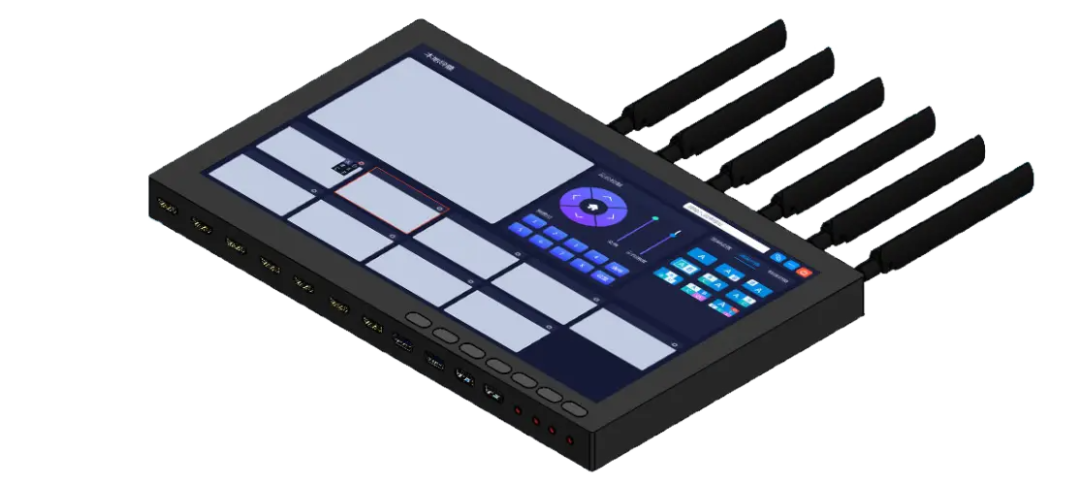With the rapid development of Internet technology, especially the extensive application of 5G, cloud computing, and artificial intelligence, the live streaming industry has ushered in an unprecedented boom. From online education, remote meetings to e-commerce live streaming, real-time interactive video content has become an important bridge connecting people with each other and with information. The portable live streaming director integrated machine has emerged to meet the demand, integrating functions needed for live streaming such as capture, processing, encoding, switching, and transmission, greatly simplifying the live streaming process and improving the efficiency of live streaming.

The core of the portable live streaming director integrated machine lies in the support of the hardware platform, which needs to handle high-resolution multi-channel video input, have high-speed network connections, sufficient storage space, integrated AI solutions, and ensure that the equipment can operate stably for a long time.
(13) (1).jpg)
Portable Live Streaming Director Integrated Machine
The Qiyang RK3588 core board adopts an octa-core high-performance processor, supports multi-channel high-definition video input, and has 8K video encoding and decoding capabilities, providing a clear and smooth live streaming picture; it has a built-in 6TOPS computing power NPU, which executes AI algorithms and realizes real-time processing of live virtual backgrounds through an integrated AI solution; it has a wealth of interface resources to meet the needs of external device connections required for live streaming.
The core board has a built-in 6TOPS computing power NPU, which provides strong support for AI algorithms and can be used for AI functions such as live background matting and generating virtual image live streaming.
It supports multiple display interfaces such as MIPI_DSI, HDMI, eDP, and DP, which can achieve simultaneous display/different display of four screens, support multi-screen splicing, and can simultaneously display live streaming images, social media interaction, data statistics, and pre-monitoring images, meeting the needs of multi-scene live streaming images and efficient operation.
It has a built-in 48M ISP that can perform real-time image processing. The hardware-based ISP can independently handle most image tasks, effectively reducing the load on the CPU and GPU, reducing the overall system power consumption while improving performance; it supports the connection of four cameras, and the connection of multiple cameras can well meet the needs of real-time switching and scene scheduling of multiple positions, providing more perspectives and rich live content.
It supports 8K video hardware encoding and decoding, providing a clearer and more delicate live streaming picture, meeting the needs of detailed magnification, multi-angle switching, and more professional live application scenarios in live streaming/recording.
It supports Gigabit Ethernet ports, M.2 interfaces, and can be connected with 4G/5G modules and WiFi modules, supporting high-speed network connections and reducing the latency of live video push; at the same time, it integrates interfaces such as MIPI_CSI, PCIe, USB3.0, GPIO, I2C, UART, which can be used for the connection of professional cameras, display devices, SSD hard drives, audio devices and other peripherals.



